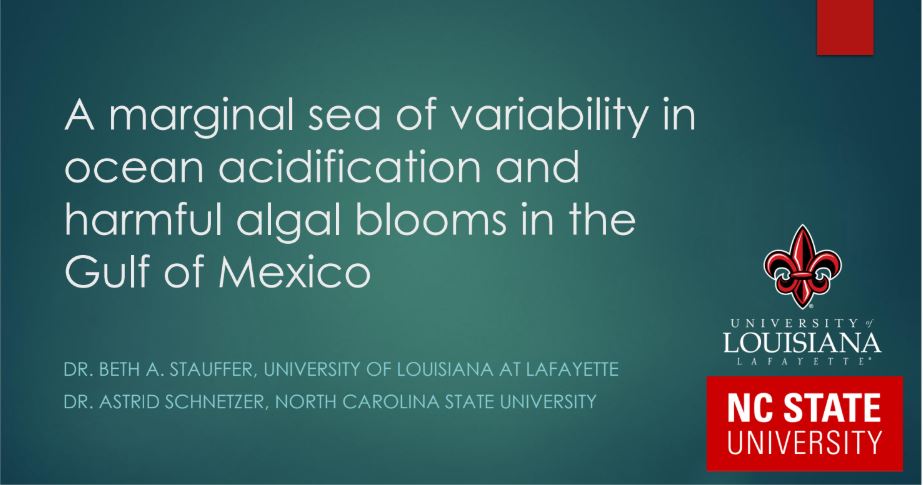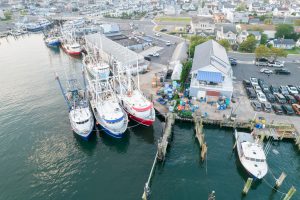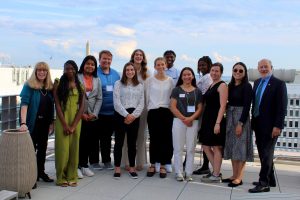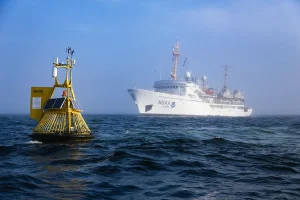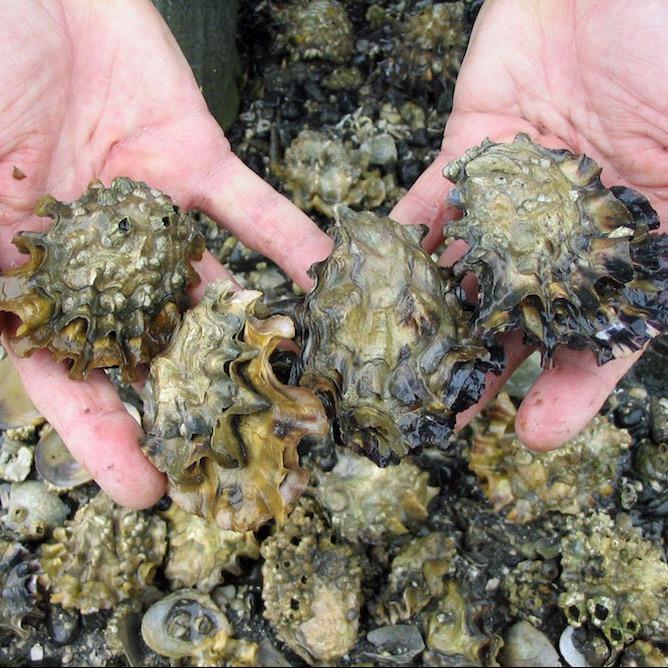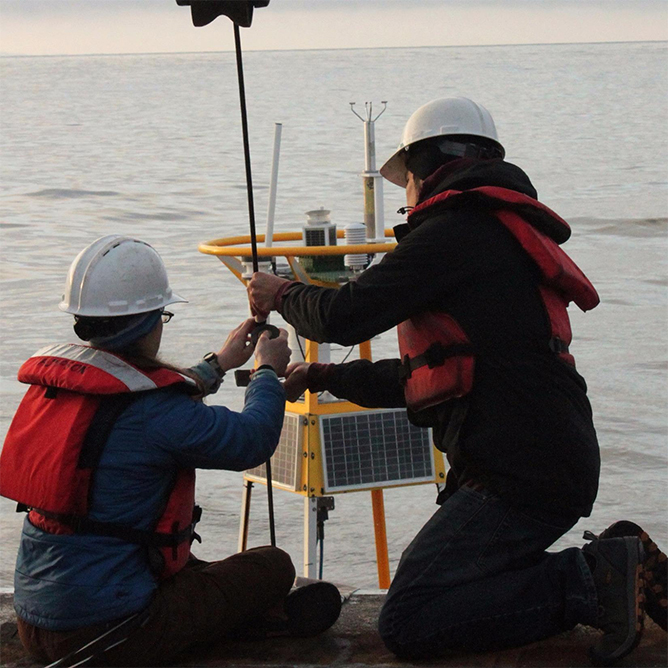Ocean acidification (OA) in the Gulf of Mexico (GOM) is driven by different physical and biogeochemical factors across the region, with most data available on the eastern and northern regions and very little information from the western or southern parts of the GOM. Upwelling dominates OA variability on the West Florida Shelf, while the northern GOM experiences eutrophication- and hypoxia enhanced OA dynamics due to the influence of the Mississippi River. OA conditions in the GOM are highly variable on an interannual basis due to physical factors such as wind, temperature, precipitation, and water mass distributions. Across the same scales, the occurrence and impacts of harmful algal blooms (HABs) are also highly variable. Of the many HAB taxa present in the GOM, toxic dinoflagellates Karenia brevis and Dinophysis ovum affect Florida and Texas waters, respectively, with significant ecological and economic impacts, while the toxic diatom Pseudo-nitzschia thrives in offshore waters throughout the GOM. Closer to shore, toxic cyanobacteria (Microcystis aeruginosa, Dolichospermum sp., etc.) have been found to contribute significantly to phytoplankton communities and produce toxins in low salinity estuaries from Florida to Louisiana. While laboratory experiments provide insights into the effects of OA (on its own or in combination with other stressors) on growth or toxicity of individual HAB taxa, we are only beginning to learn how phytoplankton communities as a whole change in response to these factors. A relatively small number of studies on competitive advantages for phytoplankton in a high-CO2 environment show a range of outcomes from little to no change in community structure to shifts that favor HAB over non-HAB taxa. This talk will highlight the state of knowledge on the OA-HAB intersection in the GOM while also challenging our community to consider what such fundamental changes in community structure and HAB success mean for ecosystem function in the region.
